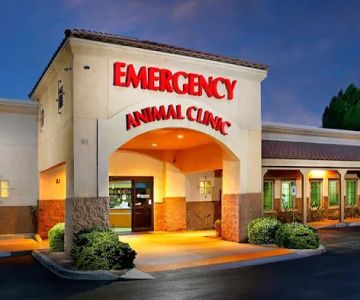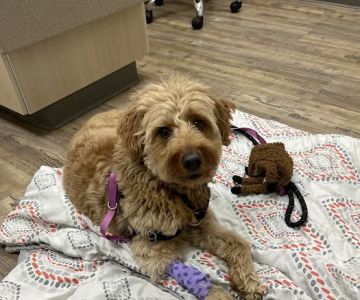Emergency Care for Pets: The Advantages of Walk-In Clinics
As a pet owner, there is nothing more terrifying than seeing your beloved pet in distress. Whether it's an unexpected injury, sudden illness, or an ongoing condition flaring up, the need for quick and effective veterinary care is critical. That’s when emergency care clinics, particularly walk-in veterinary clinics, become a lifesaver. In the United States, walk-in pet clinics are becoming an increasingly popular choice for pet owners seeking immediate attention for their furry companions. But why are they so advantageous, and how can they provide the best possible care during emergencies? Let’s explore these questions.
1. Fast and Efficient Care Without the Need for an Appointment
One of the most significant advantages of walk-in veterinary clinics is the ability to receive care without an appointment. Emergencies, by nature, can’t always be planned for. Your pet might suddenly develop severe symptoms, such as vomiting, lethargy, or difficulty breathing, and waiting days for a scheduled appointment isn’t an option. Walk-in clinics cater to these urgent situations by providing immediate medical attention. You simply walk in, and the clinic staff takes it from there.
Take, for example, the time when my cat, Whiskers, suddenly stopped eating and became incredibly lethargic. It was late in the evening, and I wasn’t sure whether it was a minor issue or something far more serious. Fearing the worst, I rushed her to a local walk-in clinic. Within minutes of arriving, the staff took Whiskers in for an examination. They were able to diagnose her condition promptly—a minor infection—and she was treated on the spot. This quick response saved me from a lot of worry and potentially more severe complications.
2. Accessible Care When Regular Clinics Are Closed
Emergencies don’t happen according to business hours. After hours, weekends, or holidays, it can be a challenge to find an open veterinary clinic. Many walk-in clinics are open 24/7 or have extended hours, making them an excellent resource for pet owners who experience emergencies outside regular office hours.
I once had a situation where my dog, Max, was involved in an accident while playing outside at night. He was limping and seemed in pain, but our regular vet was closed for the night. Fortunately, I found a nearby walk-in clinic that was open around the clock. The staff there handled Max’s situation professionally, providing him with pain relief and arranging for the necessary tests. Without the walk-in clinic, I would have had to wait until morning, and Max’s condition could have worsened.
3. Specialized Emergency Care for Pet Injuries and Health Crises
Walk-in clinics are equipped to handle a wide range of emergencies, from minor injuries like cuts and sprains to life-threatening conditions such as seizures, poisoning, or respiratory distress. These clinics typically have the necessary medical equipment on hand to stabilize pets and provide immediate treatment. In many cases, they also have veterinarians who specialize in emergency and critical care, ensuring that pets receive top-notch attention when they need it most.
One memorable experience I had was when my dog, Bella, ingested something toxic while we were out for a walk. She began vomiting uncontrollably, and I feared that the situation was serious. We rushed to a nearby walk-in clinic, and the vet immediately took action, administering activated charcoal and monitoring her vital signs. Thanks to the fast, expert care she received, Bella made a full recovery. If I had waited for a scheduled appointment with my regular vet, the outcome might have been much less favorable.
4. Affordable Emergency Care Options
One of the barriers to getting emergency care for pets is the cost. While traditional emergency animal hospitals can be expensive, many walk-in clinics offer more affordable pricing. They focus on providing essential care, which can help reduce overall costs, especially for less severe emergencies that don’t require overnight hospitalization or intensive care.
During another incident with my cat, Snowball, she had an allergic reaction after being stung by a bee. The swelling in her face was alarming, and I was unsure if it was a mild reaction or a life-threatening situation. The walk-in clinic I visited offered a reasonable pricing structure for immediate care, allowing me to get Snowball treated without breaking the bank. Fortunately, she recovered fully after receiving an antihistamine injection and a few hours of observation.
5. Preventative Care and Advice During Emergencies
While walk-in clinics are designed for emergencies, many of them also provide valuable preventative advice during visits. Veterinarians at these clinics can offer guidance on how to prevent future emergencies and ensure the long-term health of your pet. Whether it’s recommending a vaccination schedule or providing tips on pet safety, you’ll often leave a walk-in clinic with more knowledge about how to take better care of your pet in the future.
When I took Max to a walk-in clinic after his accident, the vet not only treated his injury but also advised me on how to improve his diet to support his joint health. This advice has helped me avoid further issues with Max’s mobility in the years since. I truly appreciated the additional insight that helped me prevent future emergencies.
6. Compassionate Care in Stressful Situations
One of the most heartwarming aspects of walk-in clinics is the compassionate care they offer. Emergencies can be stressful, and as a pet owner, it's essential to feel supported and understood during these times. The staff at walk-in clinics often go above and beyond to make both pets and their owners feel comfortable, whether it’s through gentle handling of a frightened animal or offering reassurance to a worried pet parent.
During Whiskers' emergency, I was overwhelmed with anxiety, but the staff at the walk-in clinic were incredibly calm and compassionate. They reassured me that everything would be okay and took the time to explain the treatment options in a way that made me feel confident in their care. It’s moments like these that remind me of the true value of walk-in clinics—providing not only medical care but emotional support as well.
7. A Community of Pet Lovers
Another unexpected benefit of walk-in clinics is the sense of community they foster. In these clinics, I’ve often met other pet owners who are facing similar situations. It’s reassuring to know that there is a network of people who genuinely care about pets and their well-being. Whether it’s sharing advice on pet care or offering a kind word during a stressful time, these clinics bring together a community of animal lovers who are all in this journey together.
When I was at the walk-in clinic with Snowball, I overheard a conversation between another pet owner and the vet. The owner was worried about her senior dog’s health, and the vet patiently explained how to monitor and manage his condition. As someone who has faced similar challenges with my own pets, I found the exchange comforting and helpful.











